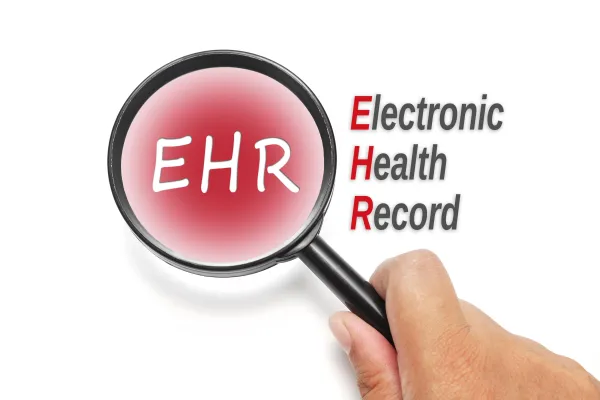Outpatient Facility Coding Alert
Discern Between Complications and Known Surgical Risks

Know when to use the ICD-10-CM index as a reference.
When it comes to coding surgical procedures and operations, coders have to know exactly how to handle complications from the procedure if and when they arise. However, how is a coder to know what categorizes as a surgical complication, as opposed to a known or expected "risk?"
It seems that, depending on the operation, there are certain gray areas that exist when making the determination between what constitutes a complication versus a common result of the surgery. While some coders may not necessarily think it matters in most cases, these classifications can determine both the diagnosis and whether or not the coder may bill out for a secondary procedure.
While there are no definitive guidelines in place to clear the air entirely, making these important distinctions do not need to be left entirely up to your own volition. Follow up with this example and helpful advice to help ensure your complication coding isn't any more complicated than it needs to be.
Know Medicare's Postsurgical Complication Policies
Before making any coding considerations on your respective clinical scenarios, you must understand what Medicare does and does not include in the global surgery payment. Medicare includes the following in the global surgery payment:
- All additional medical or surgical services required of the surgeon during the postoperative period of the surgery because of complications, which do not require additional trips to the operating room.
- Follow-up visits during the postoperative period of the surgery that are related to recovery from the surgery.
- Postsurgical pain management by the surgeon.
Additionally, Medicare does not include the following services in the global surgery payment:
- Visits unrelated to the diagnosis for which the surgical procedure is performed, unless the visits occur due to complications of the surgery.
- Treatment for the underlying condition or an added course of treatment that is not part of normal recovery from surgery.
- Clearly distinct surgical procedures that occur during the postoperative period that are not re-operations or treatment for complications.
- Treatment for postoperative complications requiring a return trip to the operating room (OR).
As you can see based on these guidelines, semantics plays a vital role in deciding whether or not a coder is able to separately report the treatment of a condition following a surgical procedure.
How AMA Guidelines Differ
"Interestingly, AMA CPT® has a different definition of what is included in the global period," relays Barbara J. Cobuzzi, MBA, CPC, COC, CPC-P, CPC-I, CENTC, CPCO, AAPC Fellow, vice president at Stark Coding & Consulting LLC, in Shrewsbury, New Jersey. "You will find on page 70 of 2018 AMA CPT® Professional, in the Surgery Guidelines, CPT® defines follow-up care for diagnostic and therapeutic procedures. This AMA CPT® definition differs significantly from Medicare Part B," Cobuzzi states.
This means that the practice should be inquiring to each non-Medicare Part B payer to find out their rules for services provided related to postoperative complications. Blindly following Medicare Part B rules for all payers may cost the practice revenue that has been earned per the AMA CPT® guidelines, so make sure that you take the extra steps to find out which guidelines each of your non-Medicare Part B payers follow.
Use Postoperative Seromas As an Example
Example: The physician performs a postoperative drainage of a seroma 15 days following a total hip arthroplasty (THR).
Medicare does not have any exclusive definition for what constitutes a surgical complication. The development of a seroma following a total hip replacement is an excellent example of a condition that is often expected following various kinds of operations. Since THR code 27130 (Arthroplasty, acetabular and proximal femoral prosthetic replacement [total hip arthroplasty], with or without autograft or allograft) has a global period of 90 days, the treatment of the seroma will fall within the code's global period. Therefore, it's highly important that the provider and coder can make a clear distinction as to whether or not the seroma can and should be identified as anything other than a surgical complication.
Some coders may argue that the complication designation isn't important due to the patient's follow-up procedure of a 10140 (Incision and drainage of hematoma, seroma or fluid collection). However, an incision and drainage (I&D) of a seroma does not require a return to the OR. Medicare specifically states that an OR does not include "a patient's room, a minor treatment room, a recovery room, or an intensive care unit (unless the patient's condition was so critical there would be insufficient time for transportation to an OR." Treatment of a postoperative seroma will almost exclusively occur in a minor treatment room or a physician's office.
Check the ICD-10-CM Index Designation
If a coder opts not to designate a seroma as complication, they may consider the use of modifier 58 (Staged or related procedure or service by the same physician or other qualified health care professional during the postoperative period) on code 10140. Ultimately, however, despite the inability to truly determine what constitutes a surgical complication, coders should conclude that a seroma qualifies as a complication as it relates to Medicare's guidelines.
While no definition may be in place, coders can presumably fall back on their ICD-10-CM index for a more definitive answer. This becomes a little clearer since you have to find the diagnosis code for postprocedural seroma L76.34 (Postprocedural seroma of skin and subcutaneous tissue following other procedure) using the principal index term of "complication."
Still, there may be some wiggle room as it pertains to other payers. A coder or practice manager may inquire with certain payers for a more clear-cut definition of what constitutes a surgical complication. If the payer gives an open-ended response, it may be worth inquiring about certain cases on an individual basis.
Related Articles
Outpatient Facility Coding Alert
- CPT® Coding:
Discern Between Complications and Known Surgical Risks
Know when to use the ICD-10-CM index as a reference. When it comes to coding [...] - E/M Coding:
Know When, How to Justify Time Factor Over Key Components
Survey the visit, documentation to make the correct determination. Depending on your subspecialty of outpatient [...] - ICD-10 Coding:
Minimize Pressure of Pressure Ulcer Coding, Use these 4 Pointers
Look for site, severity, and more. When your surgeon treats pressure ulcers, you'll need to [...] - You Be the Coder:
Rely on NCCI Guidelines for Pain Management Following RC Repair
Question: A patient returns two days following a rotator cuff repair (acute) complaining of chronic [...] - Reader Question:
Avoid Use of Multiple Codes for Aspiration, Injection of Same Joint
Question: How do I code a scenario in which the provider performs a knee aspiration [...] - Reader Question:
Refer to CCI Edits for 2 Scopes
Question: Our surgeon performed a colonoscopy, removing one polyp, but he also documented a submucosal [...] - Reader Question:
Understand Role of Measurement in Melanoma Excision Surgery
Question: An op report describes melanoma re-excision of a 1.9 cm lesion with 0.1 cm [...]




